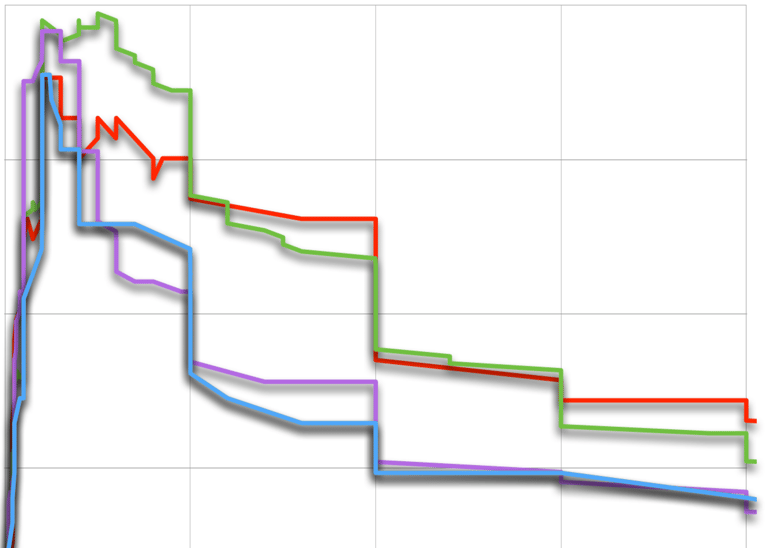How to Develop the Pricing Strategy for Your Marketing Plan
 PriceBeam
·
3 minute read
PriceBeam
·
3 minute read

One of the key components in any marketing plan is the pricing strategy. Not only will it determine how much profit you are going to earn, it will also play a pivotal role in positioning your product. Yet, it’s neglected by most B2B marketers and B2C marketers even though it should get just as much attention as the rest of your marketing mix.
Pricing is the Most Important of the 4 P’s
Whether you care about profits or not, your pricing is essential for your entire product mix. Your pricing will convey messages about your product in terms of perceived quality and attractiveness. That’s how Yves Saint Lauren manages to sell a plain black t-shirt at $390. Sure, the materials used may be of high quality but the price is in no way a reflection of the cost. It’s all about branding, and price is very effective when it comes to branding. In the case with Yves Saint Laurent, the price-tag sends a message to the customer that obviously, at this price, the product is of incredibly high quality and in very high demand (and customers want to own products in high demand to gain social recognition!). The bottom line is that the price is often what determines the perceived quality of the product, and not the actual quality of the materials used.
Your price will also influence your distribution channels. Retailers and the like have a brand to maintain and a position in the market that their product range needs to be in line with. Thus, you need to make sure that your price is attractive to distributors that target your segment.
Developing a Great Pricing Strategy
The right pricing strategy for your marketing plan is one that conveys the right message of quality, supports your promotion strategy, and maximizes your profits. Typically, these overlap so even if you don’t care about profit, the right price for your product will typically be one close to the profit-maximizing one.
Setting a Price that Sends the Right Message
In the mind of your customer, the price is a testimonial to your product’s quality. Consequently, many companies successfully manage to increase prices while increasing sales volume simultaneously! So don’t think you will automatically get a higher sales volume by setting a lower price.
At this point you may or may not have identified the target segment for your product; if you haven’t, it’s time! You can’t set a price that sends the appropriate message of quality without knowing what customer segment is going to buy your product.
Setting a Price that Supports your Promotion Strategy
When you have identified your target segment, you will need to find out how you will differentiate yourself from your competitors. Michael Porter’s generic strategy framework divides differentiation strategies into two groups; product differentiation and cost leadership.
If you’re using product differentiation, conveying the right quality message as mentioned above, becomes even more important. Ultimately, the quality of your product is irrelevant! It’s all about perceived quality, and here price plays an important role.
If you’re using cost leadership you obviously want to set a price that is lower than your competitors’. However, you need to be cautious with this strategy. Your competitors might not be as cost-efficient as they seem; they might be losing money at their current price point and simply try to keep you from entering the market or from gaining market share. Make sure you don’t attempt the cost leadership strategy unless you are, in fact, a cost leader. You want to make sure you can maintain an acceptable profit margin that keeps your business sustainable.
Generally, for most businesses, cost leadership is not a desirable strategy as it often leaves you with razor-thin margins. And even if you may think your product can only compete on price, this is rarely the case.
Setting a Price that Maximizes Profit

Even though this post is about your marketing plan, you need to keep the financials in mind, too. Most businesses have profit as a main objective and marketing is a key component in creating profit for you and potential shareholders. To find this price, you want to set a price that is equal to the willingness-to-pay of your customer segment. It needs to be based on the value they place on your product; not your cost, not your competitor's prices or anything else! Typically, you derive this willingness-to-pay by using pricing research methods such as conjoint analysis or Van Westendorp’s price-sensitivity meter and it is really the only way to arrive at an accurate price.
Other Things to Consider
When developing the pricing strategy for your marketing plan, you must also consider how you are going to justify your price to your customers. That is, how are you going to communicate your customer value proposition?
The customer value proposition is your description of why your customer should buy your product and pay the price you charge for it. Your product may well be worth your price, or perhaps even more, but if you fail to communicate this to the customer you will not maximize their willingness-to-pay. Either they will not buy your product, or you will be leaving money on the table. Most purchase decisions are made in a few seconds, so don’t count on your customers to identify the value your product provides to them. You should be the one to tell them!
Final Note: Don’t “Set and Forget” Your Price
Customer segments are dynamic in taste, demographics, and willingness-to-pay. Your price should be adjusted accordingly. If you developed a pricing strategy for previous marketing plans, it is very likely this will not be optimal anymore! And if this is your first time developing a pricing strategy, you will need to evaluate it on a yearly or even quarterly basis. Your price is one of the most important profit levers, so do dedicate the time and resources necessary to get it right again and again.
Thanks for reading! We have plenty of free resources for helping you develop a great pricing strategy. Have a browse!




